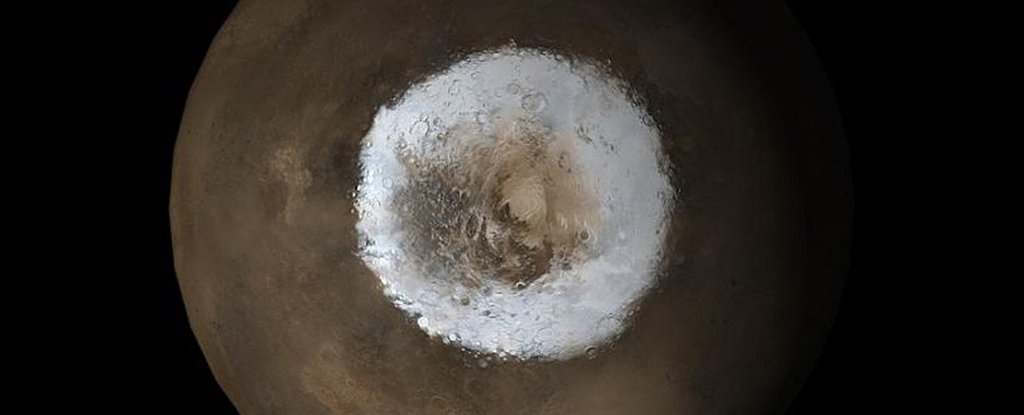
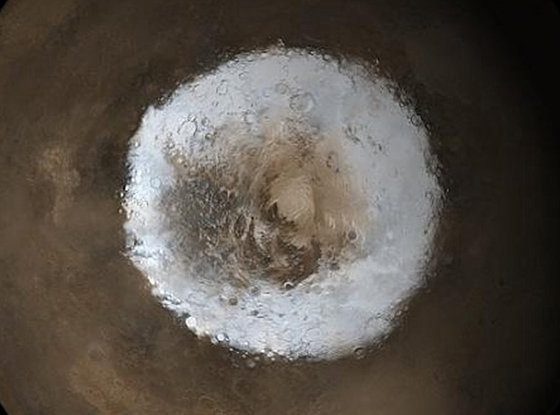
News
Mars’ longtime polar mystery may have finally been solved
From the surface, Mars may seem like a dry, desert-like world lacking water, but a closer look at the planet’s poles will some striking structures: massive polar ice caps.
At the north pole, the ruddy terrain peeks through the ice, like zebra stripes. In the south pole lurks a mystery, a massive deposit of frozen carbon dioxide and water ice. Scientists have spent decades trying to understand how it formed and how it’s linked to the amount of carbon dioxide (CO2) in the Martian atmosphere.
A pair of scientists in the 1960s came up with a plausible theory, and now, decades later, a new study published in Nature Astronomy may have confirmed their findings.
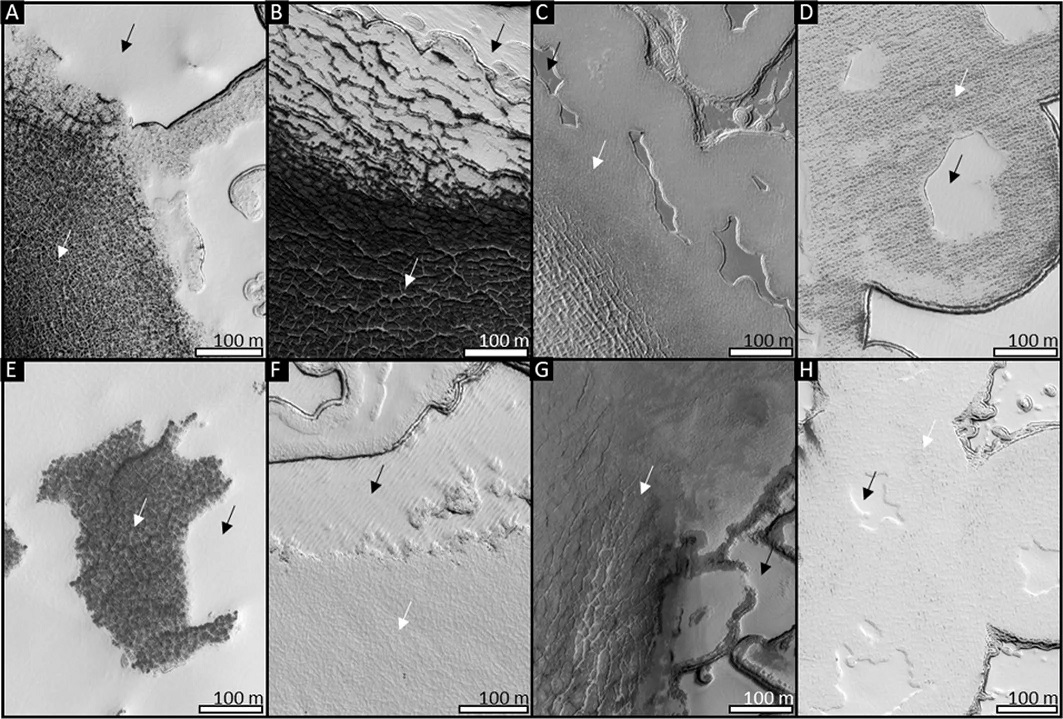
The massive deposit — measuring 3,280 feet (1 kilometer) thick — contains sheets of water ice and carbon dioxide arranged in alternating layers, like a cake. It’s topped off with a thin frosting of carbon dioxide ice, and scientists noticed something interesting: the massive ice deposit contains as much carbon dioxide as the entire Martian atmosphere.
Peter Buhler, a planetary scientist at NASA’s Jet Propulsion Laboratory led the new study. The team used computer simulations to map out the ice, and they were surprised at how closely their models matched with what Robert B. Leighton and Bruce Murray predicted decades ago.
“Usually, when you run a model, you don’t expect the results to match so closely to what you observe,” he said in a statement. “But the thickness of the layers, as determined by the model, matches beautifully with radar measurements from orbiting satellites.”
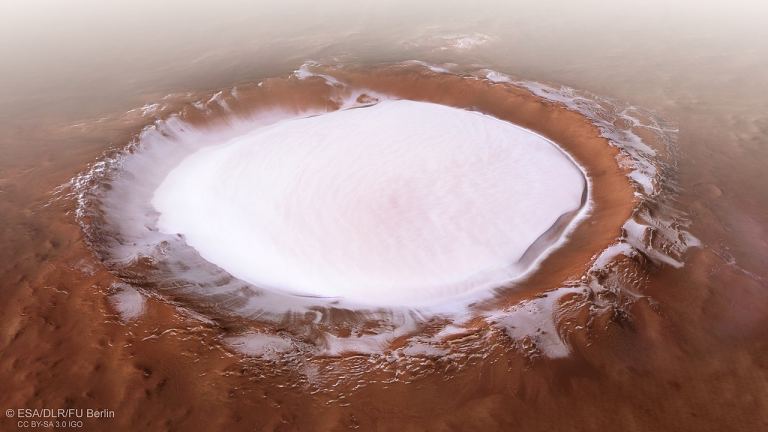
The ice cap puzzled researchers because according to science, it shouldn’t exist. That’s because water ice is more thermally stable and darker than carbon dioxide ice, which means that it should destabilize when layered between water ice.
However, the new model explains this behavior. Buhler and his team say there are three reasons why the frozen carbon dioxide exists. First, Mars wobbles as it orbits the sun, and when it does, the slight changing of the tilt alters the amount of sunlight that hits the ice. Second, each type of ice reflects the sun a bit differently. And lastly, because of the exposure to sunlight, the carbon dioxide sublimates–meaning it goes directly from a solid to a gas–which alters the atmospheric pressure.
As Mars wobbles, the amount of sunlight reaching the ice varies, causing the ice to form and then later sublimate. When the carbon dioxide ice was forming, water ice would’ve been trapped with it. But when that ice sublimated, the more stable water ice would have remained behind, forming the layers we now see at the south pole.
https://www.youtube.com/watch?v=8Gj8dr6AsYg
Mars’ climate, just like Earth’s, has changed over millions of years. To that end, not all of the carbon dioxide ice was lost; some were left behind to build up the varying layers we see—a process that has altered the red planet’s atmospheric pressure.
This is what Leighton and Murray hypothesized back decades ago, and this is what Buhler’s new model shows.
“Our determination of the history of Mars’s large pressure swings is fundamental to understanding the evolution of Mars’s climate, including the history of liquid water stability and habitability near Mars’s surface,” Buhler said in a statement.
By understanding what processes formed the south polar ice cap, scientists can better understand more of what happened in Mars’ history.

News
Ford cancels all-electric F-150 Lightning, announces $19.5 billion in charges
“Rather than spending billions more on large EVs that now have no path to profitability, we are allocating that money into higher returning areas, more trucks and van hybrids, extended range electric vehicles, affordable EVs, and entirely new opportunities like energy storage.”
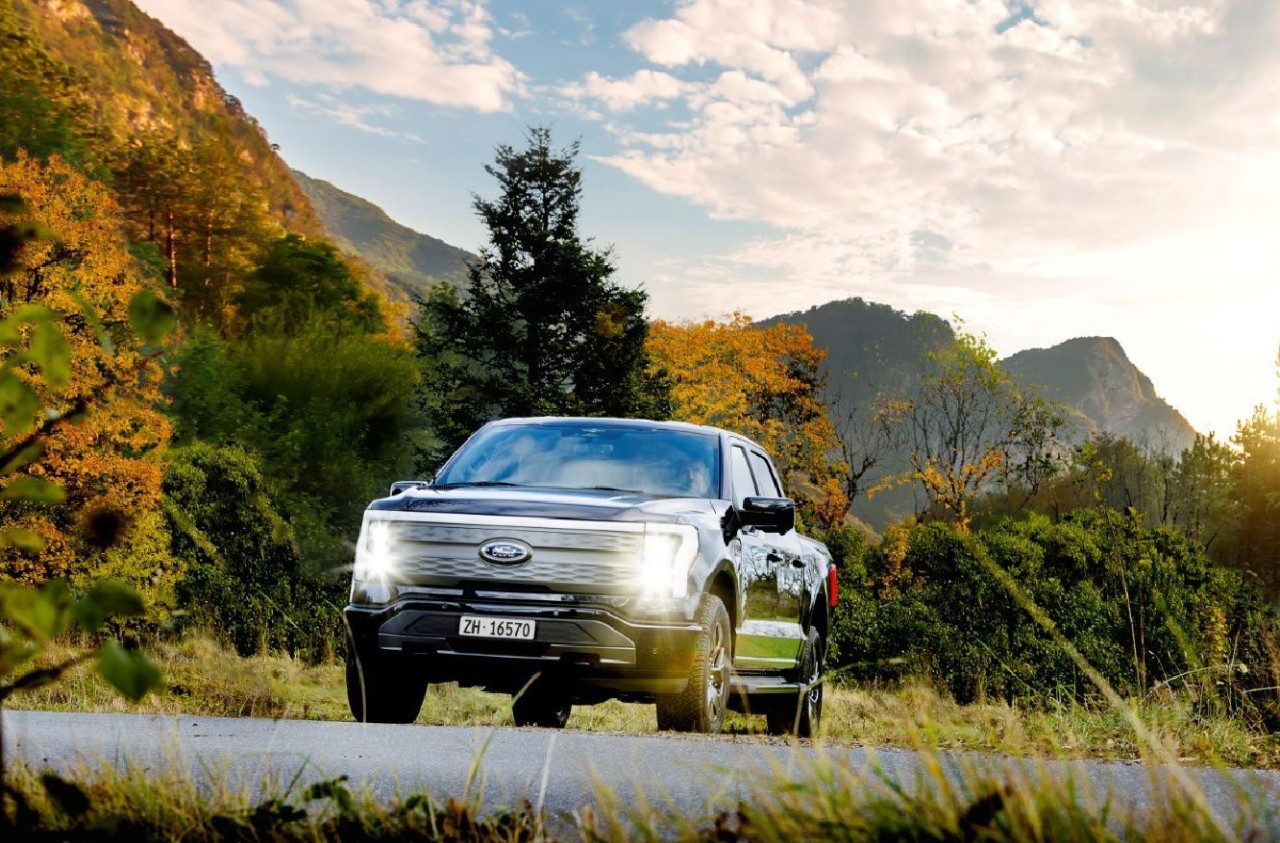
Ford is canceling the all-electric F-150 Lightning and also announced it would take a $19.5 billion charge as it aims to quickly restructure its strategy regarding electrification efforts, a massive blow for the Detroit-based company that was once one of the most gung-ho on transitioning to EVs.
The announcement comes as the writing on the wall seemed to get bolder and more identifiable. Ford was bleeding money in EVs and, although it had a lot of success with the all-electric Lightning, it is aiming to push its efforts elsewhere.
It will also restructure its entire strategy on EVs, and the Lightning is not the only vehicle getting the boot. The T3 pickup, a long-awaited vehicle that was developed in part of a skunkworks program, is also no longer in the company’s plans.
Instead of continuing on with its large EVs, it will now shift its focus to hybrids and “extended-range EVs,” which will have an onboard gasoline engine to increase traveling distance, according to the Wall Street Journal.
“Ford no longer plans to produce select larger electric vehicles where the business case has eroded due to lower-than-expected demand, high costs, and regulatory changes,” the company said in a statement.
🚨 Ford has announced it is discontinuing production of the F-150 Lightning, as it plans to report a charge of $19.5 billion in special items.
The Lightning will still be produced, but instead with a gas generator that will give it over 700 miles of range.
“Ford no longer… pic.twitter.com/ZttZ66SDHL
— TESLARATI (@Teslarati) December 15, 2025
While unfortunate, especially because the Lightning was a fantastic electric truck, Ford is ultimately a business, and a business needs to make money.
Ford has lost $13 billion on its EV business since 2023, and company executives are more than aware that they gave it plenty of time to flourish.
Andrew Frick, President of Ford, said:
“Rather than spending billions more on large EVs that now have no path to profitability, we are allocating that money into higher returning areas, more trucks and van hybrids, extended range electric vehicles, affordable EVs, and entirely new opportunities like energy storage.”
CEO Jim Farley also commented on the decision:
“Instead of plowing billions into the future knowing these large EVs will never make money, we are pivoting.”
Farley also said that the company now knows enough about the U.S. market “where we have a lot more certainty in this second inning.”
News
SpaceX shades airline for seeking contract with Amazon’s Starlink rival

SpaceX employees, including its CEO Elon Musk, shaded American Airlines on social media this past weekend due to the company’s reported talks with Amazon’s Starlink rival, Leo.
Starlink has been adopted by several airlines, including United Airlines, Qatar Airways, Hawaiian Airlines, WestJet, Air France, airBaltic, and others. It has gained notoriety as an extremely solid, dependable, and reliable option for airline travel, as traditional options frequently cause users to lose connection to the internet.
Many airlines have made the switch, while others continue to mull the options available to them. American Airlines is one of them.
A report from Bloomberg indicates the airline is thinking of going with a Starlink rival owned by Amazon, called Leo. It was previously referred to as Project Kuiper.
American CEO Robert Isom said (via Bloomberg):
“While there’s Starlink, there are other low-Earth-orbit satellite opportunities that we can look at. We’re making sure that American is going to have what our customers need.”
Isom also said American has been in touch with Amazon about installing Leo on its aircraft, but he would not reveal the status of any discussions with the company.
The report caught the attention of Michael Nicolls, the Vice President of Starlink Engineering at SpaceX, who said:
“Only fly on airlines with good connectivity… and only one source of good connectivity at the moment…”
CEO Elon Musk replied to Nicolls by stating that American Airlines risks losing “a lot of customers if their connectivity solution fails.”
American Airlines will lose a lot of customers if their connectivity solution fails
— Elon Musk (@elonmusk) December 14, 2025
There are over 8,000 Starlink satellites in orbit currently, offering internet coverage in over 150 countries and territories globally. SpaceX expands its array of satellites nearly every week with launches from California and Florida, aiming to offer internet access to everyone across the globe.
Currently, the company is focusing on expanding into new markets, such as Africa and Asia.
News
Tesla Model Y Standard stuns in new range test, besting its Premium siblings
Tesla’s newer vehicles have continued to meet or exceed their EPA estimates. This is a drastic change, as every 2018-2023 model year Tesla that Edmunds assessed did not meet its range estimates.
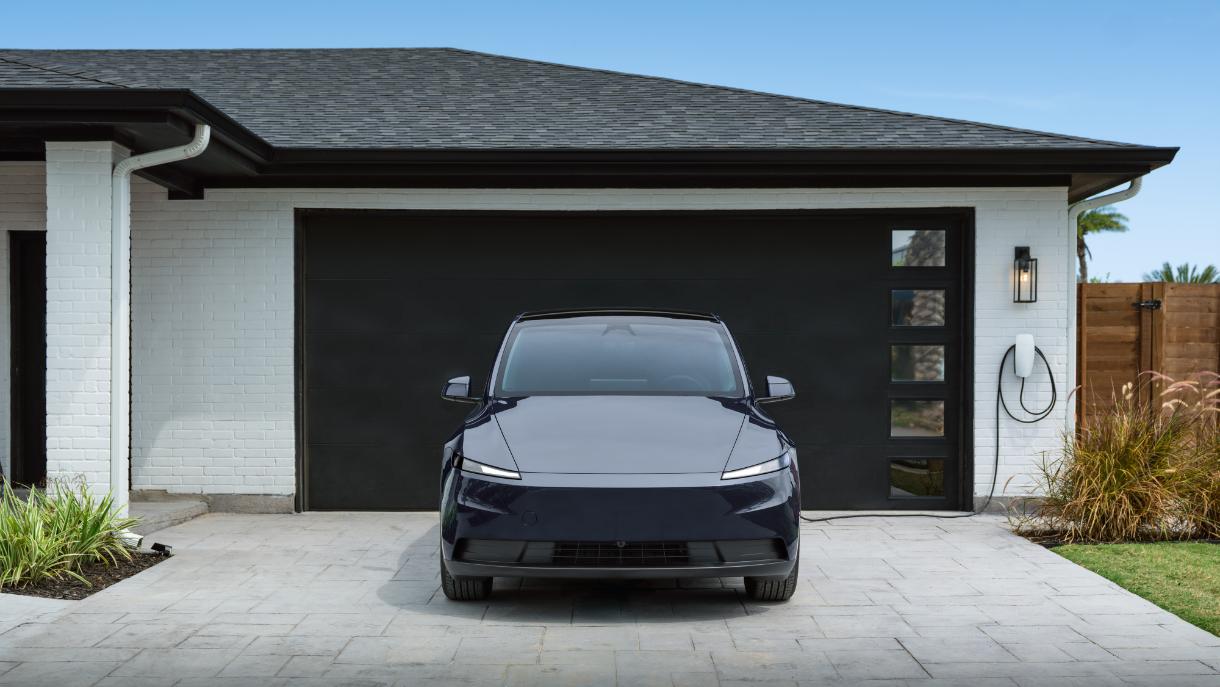
The Tesla Model Y Standard stunned in a new range test performed by automotive media outlet Edmunds, besting all of its Premium siblings that are more expensive and more luxurious in terms of features.
Testing showed the Model Y Standard exceeded its EPA-estimated range rating of 321 miles, as Edmunds said it is the “longest-range Model Y that we’ve ever put on our loop.” In the past, some vehicles have come up short in comparison with EPA ranges; for example, the Model Y’s previous generation vehicle had an EPA-estimated range of 330 miles, but only drove 310.
Additionally, the Launch Series Model Y, the first configuration to be built in the “Juniper” program, landed perfectly on the EPA’s range estimates at 327 miles.
It was also more efficient than Premium offerings, as it utilized just 22.8 kWh to go 100 miles. The Launch Series used 26.8 kWh to travel the same distance.
It is tested using Edmunds’ traditional EV range testing procedure, which follows a strict route of 60 percent city and 40 percent highway driving. The average speed throughout the trip is 40 MPH, and the car is required to stay within 5 MPH of all posted speed limits.
Each car is also put in its most efficient drive setting, and the climate is kept on auto at 72 degrees.
“All of this most accurately represents the real-world driving that owners do day to day,” the publication says.
With this procedure, testing is as consistent as it can get. Of course, there are other factors, like temperature and traffic density. However, one thing is important to note: Tesla’s newer vehicles have continued to meet or exceed their EPA estimates. This is a drastic change, as every 2018-2023 model year Tesla that Edmunds assessed did not meet its range estimates.
Tesla Model Y Standard vs. Tesla Model Y Premium
Tesla’s two Model Y levels both offer a great option for whichever fits your budget. However, when you sit in both cars, you will notice distinct differences between them.
The Premium definitely has a more luxurious feel, while the Standard is stripped of many of the more premium features, like Vegan Leather Interior, acoustic-lined glass, and a better sound system.
You can read our full review of the Model Y Standard below:
Tesla Model Y Standard Full Review: Is it worth the lower price?








